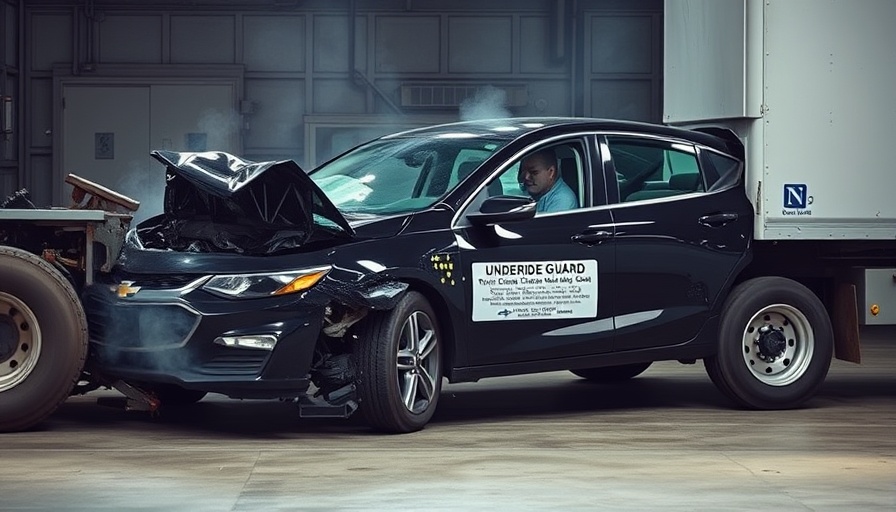
Understanding the Importance of Underride Guards
When it comes to vehicle safety, especially in the context of large trucks, underride guards play a critical role. These metal frames are attached to the rear of trailers to prevent smaller vehicles from sliding underneath during a collision. Unfortunately, many underride guards on the market fail to provide sufficient protection during real-world accidents. This reality highlights the significance of new innovations in safety equipment, such as the recently released Stoughton intermodal chassis that meets the IIHS Toughguard criteria.
What Makes Stoughton’s Chassis Unique?
Stoughton’s intermodal chassis isn’t just another trailer; it’s the first of its kind to qualify for the prestigious Toughguard award for superior rear underride protection. What sets it apart is a completely new design that addresses the unique challenge posed by chassis-type trailers in supporting an effective underride guard. Unlike standard trailers, intermodal chassis require innovative solutions due to their ladderlike structure, which necessitates a vigilant focus on crash safety. In addition to protecting occupants of smaller vehicles from severe injury or fatalities during an impact, this system serves a broader purpose — aligning with IIHS’s ambitious goal of reducing road fatalities by 30% by 2030.
Lasting Impact of Enhanced Safety Features
Why does this matter to everyday drivers? As vehicle owners managing the aftermath of a car accident, understanding the nature of vehicle safety helps you make more informed decisions when you're on the road. Whether you’re evaluating repair estimates, negotiating insurance claims, or contemplating vehicle valuations, knowing whether a trailer is equipped with advanced safety features could influence your safety while driving. Stoughton’s innovation sets a precedent that could encourage other manufacturers to enhance their safety standards. In turn, safer trucks can lead to fewer accidents and more peace of mind for all drivers.
Federal Regulations vs. Toughguard Standards
While the National Highway Traffic Safety Administration (NHTSA) established new federal rules for underride guards in June 2022, many experts argue that these regulations do not adequately protect drivers on the roads. A significant downside to these rules is that they rely on tests performed on universal rigs rather than real-world trailers, where manufacturers often cut corners. In contrast, the IIHS conducts thorough crash tests with real trailers, adding credibility to the Toughguard award and showcasing the effectiveness of their standards. For operators involved in shipping logistics, being aware of these differences could impact the choices made for transport equipment.
The Broader Implications for Freight Transport
The growing reliance on container shipping highlights just how critical improved underride practices are for modern freight transport. As e-commerce and global trade continue to expand, the number of intermodal chassis on the roads will rise. This transition underlines the importance of addressing safety, as it can directly impact accident claims and the repair processes following incidents. Staying informed about advancements such as the Toughguard-equipped trailers ensures that both owners and operators are aware of evolving safety measures in the transport industry.
In Conclusion: Why This Matters to You
As vehicle owners, understanding the advancements in trailer safety can help you navigate the complex web of vehicle accidents and the property damage that ensues. Whether you find yourself filing a claim, speaking with an insurance adjuster, or assessing vehicle repairs, having this information can empower you to advocate for better safety standards. As we collectively aim for a safer driving environment, it’s refreshing to see manufacturers like Stoughton stepping up their game, ensuring better safety for road users.
Remember, next time you encounter a truck on the road, consider the safety systems in place. It’s not just about the vehicle; it’s about everyone’s safety.
 Add Row
Add Row  Add
Add 




Write A Comment